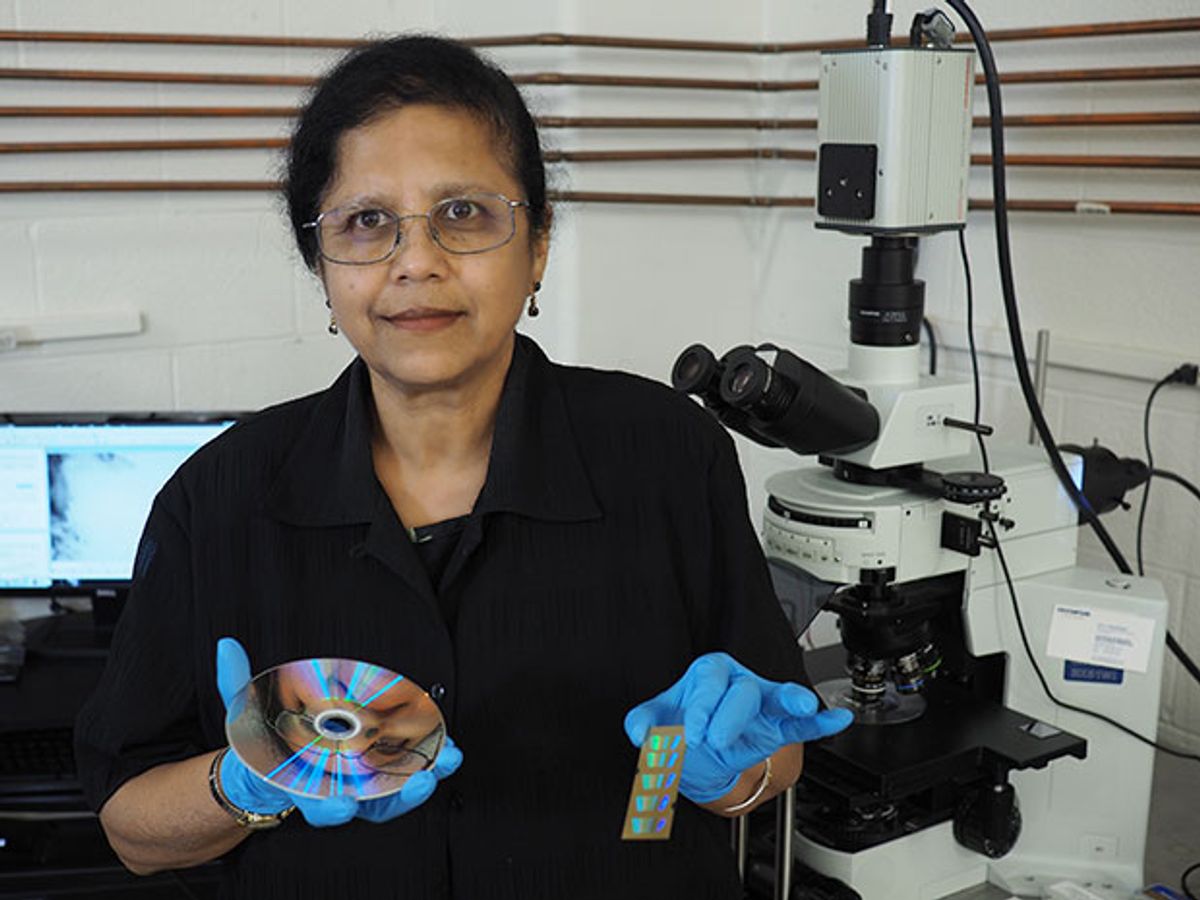Optical microscopes are a key tool in biological studies. But because they are limited by approximately half the wavelength of light used (200 to 400 nanometers), they can’t resolve molecules that are typically much smaller than these dimensions. While electron microscopes can reach resolutions far below an optical microscope, they are large, expensive pieces of equipment that require a vacuum to operate, limiting the ability to examine live samples.
Now researchers at the University of Missouri have developed a way to make an optical microscope resolve images down to 65 nanometers. In the process, they may have extended access to high resolution imaging to a much larger group of scientists who may not have access to electron microscopes.
“Usually, scientists have to use very expensive microscopes to image at the sub-microscopic level,” said Shubra Gangopadhyay, an electrical and computer engineering in the University of Missouri College of Engineering, in a press release. “The techniques we’ve established help to produce enhanced imaging results with ordinary microscopes. The relatively low production cost for the platform also means it could be used to detect a wide variety of diseases, particularly in developing countries.”
The key to getting the optical microscopes to overcome the wavelength limitations is plasmonics. The field of plasmonics exploits the oscillations in the density of electrons that are generated when photons hit a metal surface.
In this application, the Mizzou researchers used the interaction between light and the surface of a metal grating to generate a surface plasmon resonance and combined this with nano-protrusions on the surface of the grating to create “hot spots” that have very high fluorescence intensity.

The nano-protrusions act as an excitation source with an enhanced signal-to-noise ratio. When they are combined with localization microscopy, which is performed with fluorophores, it becomes possible to achieve higher localization precision. This means that in a disease study you can reach single-molecule super-resolution imaging in a wide range of fluorophores that are required to study biological interactions and activity.
In research described in the journal Nanoscale, the Mizzou researchers employed a technique known as glancing angle deposition to control silver growth on polymer gratings that were replicated from HD-DVD and Blu-Ray grating molds. Depositing the silver at a specific angle relative to the surface creates a high density of silver nano-protrusions on the grating surface and nanogaps in the shadowed region of the plasmonic grating. Because the patterns originate from a widely used technology, the researchers claim that the manufacturing process should remain relatively inexpensive.
“In previous studies, we’ve used plasmonic gratings to detect cortisol and even tuberculosis,” Gangopadhyay said. “Additionally, the relatively low production cost for the platform also means it could be used to further detect a wide variety of diseases, particularly in developing countries. Eventually, we might even be able to use smartphones to detect disease in the field due to signal enhancement as well as super-resolution imaging capability.”
Dexter Johnson is a contributing editor at IEEE Spectrum, with a focus on nanotechnology.



